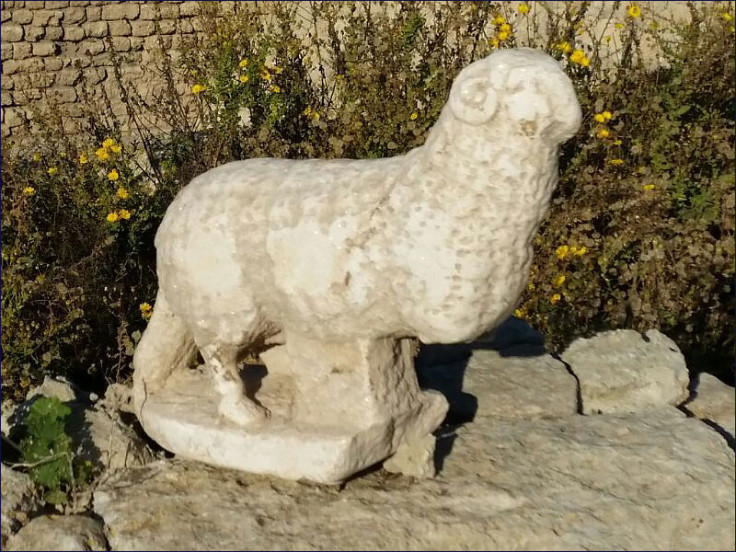Israel: Ancient ram statue discovered at Byzantine church

Archaeologists in Israel have discovered what is considered an ancient Christian symbol for Jesus. A marble statue of a ram, which Jesus is often depicted as carrying, was unearthed near a Byzantine-era church in Caesarea, about 120km north east of Jerusalem.
The discovery was made during an excavation work at Caesarea Harbor National Park led by the Israel Antiquities Authority and the Caesarea Development Corporation, the ministry of foreign affairs announced in a statement.
Archaeologists called their find "impressive" as it was found on Christmas Eve. "In ancient Christianity Jesus was not portrayed as a person. Instead, symbols were used, one of which was the ram. It may or may not be a coincidence, but the statue was uncovered on Christmas Eve," lead archaeologists Peter Gendelman and Mohammad Hater said.
The ram statue might have been part of the decoration of the Byzantine church near which it was discovered. The church dates back to 6-7AD and this may correspond to the dating of the marble statute, they said.
However, they did not rule out the possibility of it belonging to an early Roman era. "It [the ram statue] could also be earlier, from the Roman period, and was incorporated in secondary use in the church structure," the archaeologists added.
The archaeologists said the statue was particularly significant because of its representation in various ancient legends and works of art. In Egyptian mythology, the animal represents the ancient god Amun. In Roman art, the sheep often appears alongside the Greek gods Hermes and Mercury, they noted.
In Christian art, Jesus is portrayed as the shepherd tending his flock with a ram in his arms or on his shoulders in most instances. "In Christianity the ram, like the lamb, represents the faithful, or Jesus himself, whose anguish and death were meant according to Christian belief to atone for original sin," the ministry statement said.
© Copyright IBTimes 2025. All rights reserved.






















